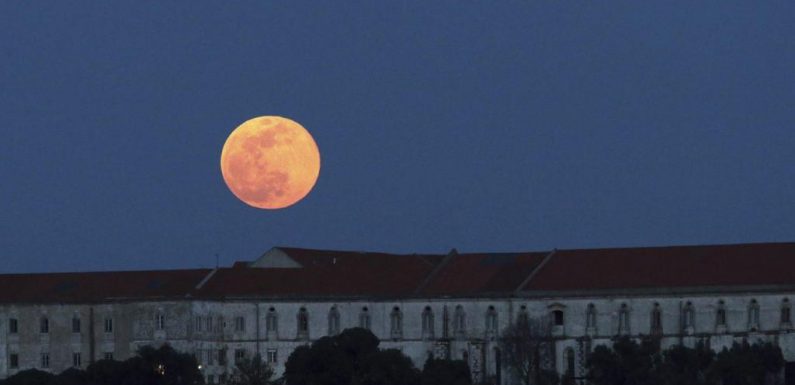
A beautiful orange moon, the first full moon of spring, will greet us Saturday evening when it rises just minutes after sunset — if the weather cooperates.
The weather forecast is for partly cloudy skies in Denver when the moon rises at 7:51 p.m., 12 minutes after the sun sets. That’s when the moon will briefly appear with an orange tint, as usually happens when a full moon rises.
While the first full moon of spring is sometimes called a Pink Moon, it won’t be pink.
“Although we wish this name had to do with the color of the moon, the reality is not quite as mystical or awe-inspiring,” according to the Old Farmer’s Almanac. “In truth, April’s full Moon often corresponded with the early springtime blooms of a certain wildflower native to eastern North America: Phlox subulata — commonly called creeping phlox or moss phlox — which also went by the name ‘moss pink.’”
Now, about that orange moon, why does it look that way when full moons appear near the horizon? It’s because red wavelengths of light pass through the atmosphere better than blue ones, as explained on an astronomy site maintained by Cornell University.
“Sunlight or moonlight must travel through the maximum amount of atmosphere to get to your eyes when the sun or moon is on the horizon,” the Cornell site says. “So, you expect more blue light to be scattered from sunlight or moonlight when the sun or moon is on the horizon; this makes the object look redder. In other words, the sun or moon tends to look orange or red when it is rising or setting because that’s the time when the light has to travel through the most atmosphere to get to you.”
It’s no coincidence that this month’s full moon occurs during Easter week. Easter always falls on the first Sunday after the first full moon of spring. Spring began with the vernal equinox on March 20.
The next full moon will be way more interesting: We will have a lunar eclipse in the eastern sky on May 15 from 8:27 p.m. to just before midnight. Following that, June and July will bring us “super moons,” which happen when a full moons coincide with the moon’s closest approaches of the year.
Subscribe to our weekly newsletter, The Adventurist, to get outdoors news sent straight to your inbox.
Source: Read Full Article









